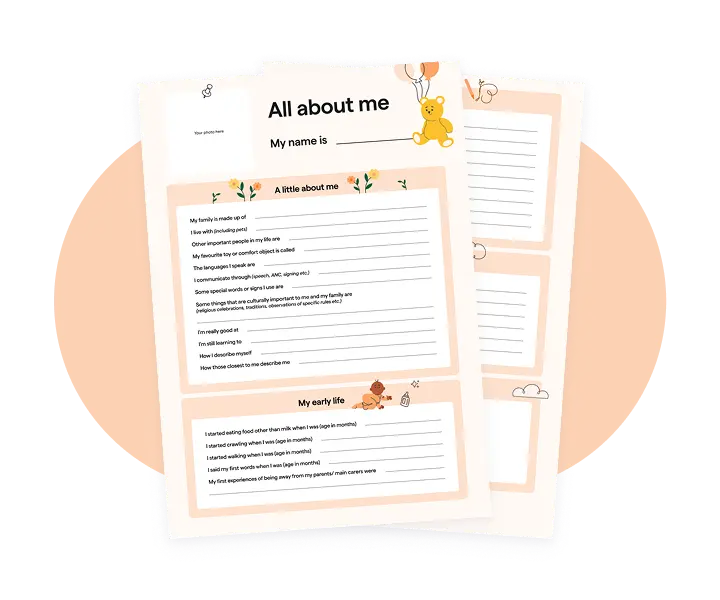settings
children
With Famly since
In our final article on heteronormativity, we cover conversations with parents and expand our focus to consider how other social characteristics intersect with LGBTQ+ inclusion. You can find parts 1 and 2 here.

Conversations with parents and carers
Our experience in practice tells us that while many practitioners will eventually come to develop confidence in challenging heteronormativity amongst children, having conversations with parents and carers about such issues can sometimes prove to be a step too far.
However, if we fail to have these conversations, more issues tend to arise further down the line. It is always better to be open about the work you and your setting are doing to support LGBTQ+ inclusion.
This might take the form of a visual display to document the learning you have been doing with the children, for instance,
- Celebrating your material resources that challenge heteronormative ideas.
- Documenting moments in children’s play where they have ‘flipped the script’ on traditional gender roles.
If you have developed your own internal policy and guidance on how to support LGBTQ+ inclusion, it might be a good idea to translate this into a parent/carer-friendly version to share with new families on arrival. This could include a reference to the Equality Act 2010 and offer straightforward information on the commitments your setting has made toward challenging inequality.
Indeed, it is important to recognise that many parents and carers will actively welcome this information and see it as a real strength of your setting that you are proactive on such issues. We all know how important their first impressions are.
The big ideas

Being proactive will also be particularly important for those families who challenge the traditional nuclear model and those who wish to raise their children beyond binary gender roles. Yet, while they may be willing to share their experiences with the children in your setting - real-life examples of two mummies and two daddies can be a great learning opportunity – it is important not to tokenise these families or see them as ‘exotic’ in any way.
Conversely, this might be a good learning opportunity to demonstrate your professional knowledge and challenge any prejudiced views or beliefs. For parents and carers who are unfamiliar with heteronormativity, sharing your approach during a coffee morning or as part of a parents’ evening can strengthen the relationships you have with them.

How does heteronormativity intersect with other social characteristics?
It can be really useful to place a specific emphasis on challenging heteronormativity in your settings as it remains an issue that tends to gather less attention. Once you have initially developed your understanding, it is then important to consider how LGBTQ+ inclusion overlaps with other areas of equality.
Intersectionality
“Intersectionality” refers to the ways in which inequality arising from gender and sexual orientation are entangled with other forms of inequality such as:
- Race
- Class
- Disability
Taking a narrow approach toward focusing on just one of these areas might enable the other to continue unchallenged.
For example, in practice, thinking about intersectionality can allow us to better understand the challenges that a racially minoritised child who is going against the gender binary might face in terms of experiencing both racism and transphobia.
A consideration of intersectionality in practice would also enable us to think about our own strategies for supporting children’s play. It might be that while you have provided a range of LGBTQ+ inclusive resources, they may only represent one race, or fail to represent disabled children.
Finally, this concept also allows us to reflect on our own biases as to what kinds of families and communities are able to challenge heteronormativity. It is often assumed to be only white and middle-class families who wish to raise their children in more gender-sensitive ways. This is not true, however the very perception can make it difficult for families from lower socio-economic backgrounds and/or racially non-white backgrounds, to come forward and discuss such issues.

Next steps, what do I do now?
Across the past three articles, we have sought to offer our best practice strategies for understanding and confronting heteronormativity in early childhood as part of your broader equalities duties.
We have covered why it matters and where LGBTQ+ inclusive practice is already seen in policy and guidance; what to do if something prejudiced or discriminatory is said; how to create a more inclusive environment; how to speak with parents; and, finally, the need to think intersectionally.
We are hopeful that the guidance provided will enable you to better recognise and challenge aspects of your practice that support heteronormativity.
As next steps, you might consider the following:
- Share these articles with a colleague and reflect on your thoughts on the issues raised. Ask them to share with a colleague and henceforth to work toward a joint level of understanding.
- Build time into your staff meetings to discuss your approach toward more inclusive practice. This might involve mind-mapping ideas toward clear internal policy guidance for new and existing members of the team. Seek out CPD opportunities if this feels a little daunting.
- Document and share your learning journey as you go along, including any moments where you notice children challenging heteronormativity.
A final note on the pace of this work: it can often feel like you need to get it ‘right’, and ‘immediately’, but this can be less productive in the long term if you are not taking time to reflect in-depth and ensuring everyone is on board before rushing ahead. Slow your urgency and ensure that the steps you are taking toward LGBTQ+ inclusion are meaningful ones.
Try learning journals for free
Add observations, and build digital learning journals to share with families instantly. All with your completely free 14-day trial.
Get started










